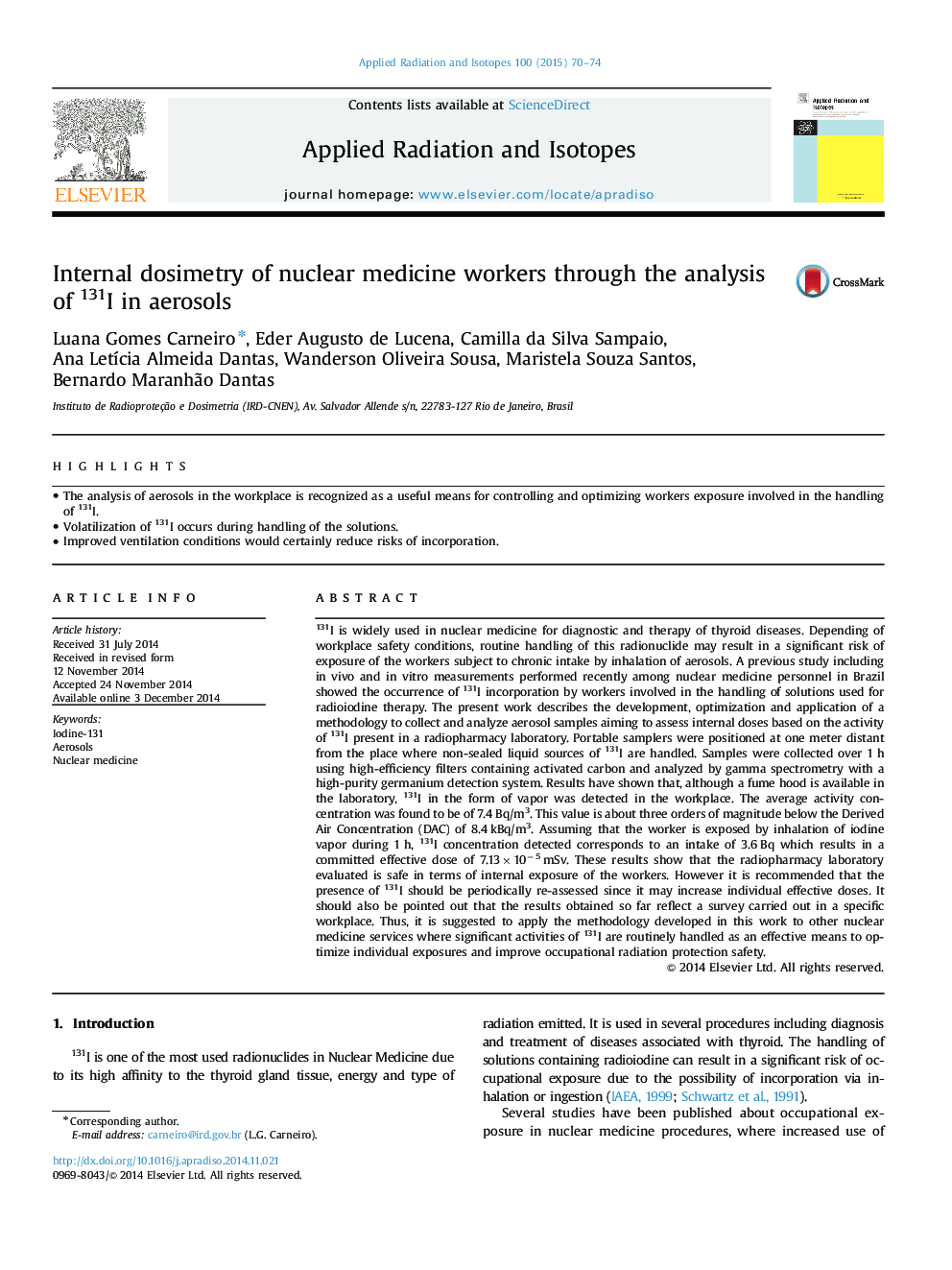| Article ID | Journal | Published Year | Pages | File Type |
|---|---|---|---|---|
| 1878989 | Applied Radiation and Isotopes | 2015 | 5 Pages |
•The analysis of aerosols in the workplace is recognized as a useful means for controlling and optimizing workers exposure involved in the handling of 131I.•Volatilization of 131I occurs during handling of the solutions.•Improved ventilation conditions would certainly reduce risks of incorporation.
131I is widely used in nuclear medicine for diagnostic and therapy of thyroid diseases. Depending of workplace safety conditions, routine handling of this radionuclide may result in a significant risk of exposure of the workers subject to chronic intake by inhalation of aerosols. A previous study including in vivo and in vitro measurements performed recently among nuclear medicine personnel in Brazil showed the occurrence of 131I incorporation by workers involved in the handling of solutions used for radioiodine therapy. The present work describes the development, optimization and application of a methodology to collect and analyze aerosol samples aiming to assess internal doses based on the activity of 131I present in a radiopharmacy laboratory. Portable samplers were positioned at one meter distant from the place where non-sealed liquid sources of 131I are handled. Samples were collected over 1 h using high-efficiency filters containing activated carbon and analyzed by gamma spectrometry with a high-purity germanium detection system. Results have shown that, although a fume hood is available in the laboratory, 131I in the form of vapor was detected in the workplace. The average activity concentration was found to be of 7.4 Bq/m3. This value is about three orders of magnitude below the Derived Air Concentration (DAC) of 8.4 kBq/m3. Assuming that the worker is exposed by inhalation of iodine vapor during 1 h, 131I concentration detected corresponds to an intake of 3.6 Bq which results in a committed effective dose of 7.13×10−5 mSv. These results show that the radiopharmacy laboratory evaluated is safe in terms of internal exposure of the workers. However it is recommended that the presence of 131I should be periodically re-assessed since it may increase individual effective doses. It should also be pointed out that the results obtained so far reflect a survey carried out in a specific workplace. Thus, it is suggested to apply the methodology developed in this work to other nuclear medicine services where significant activities of 131I are routinely handled as an effective means to optimize individual exposures and improve occupational radiation protection safety.
